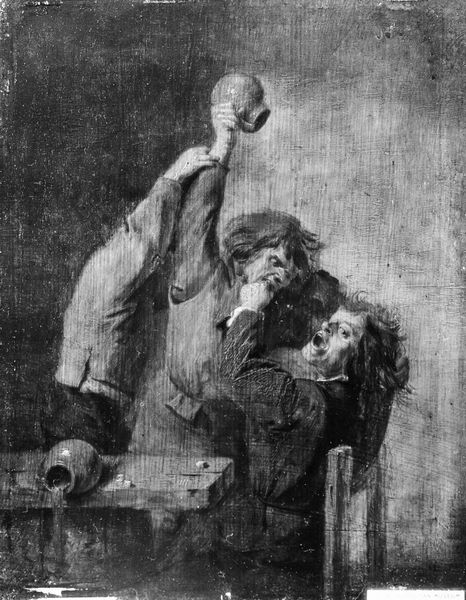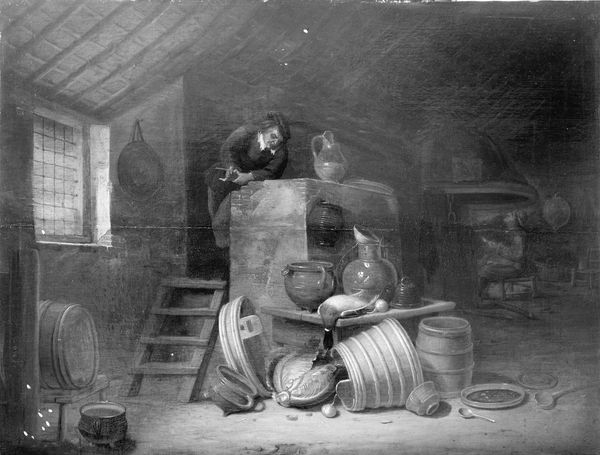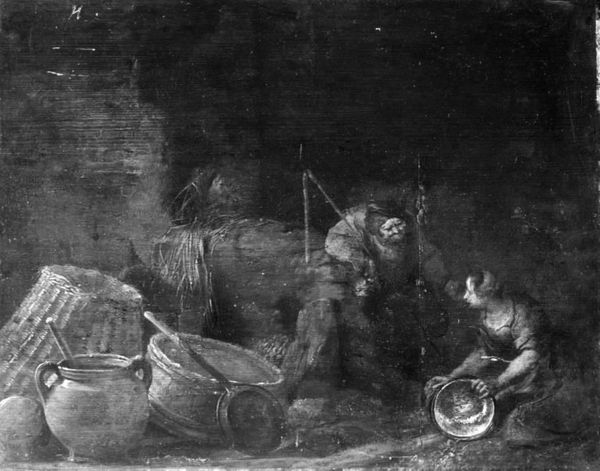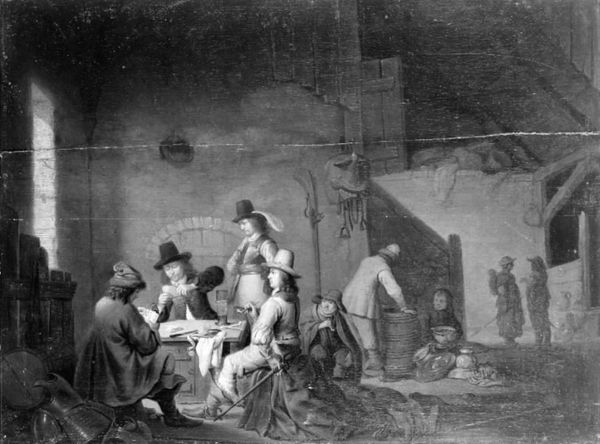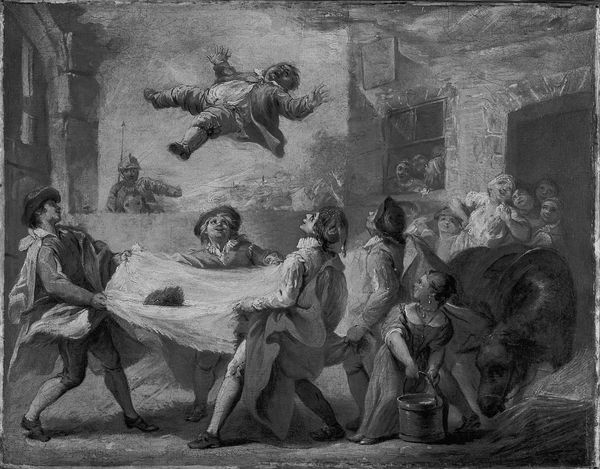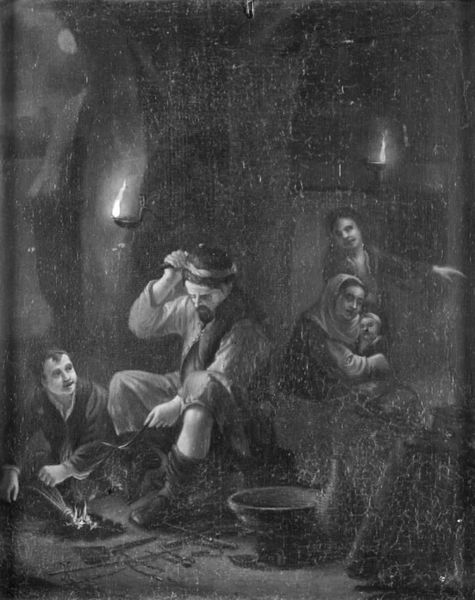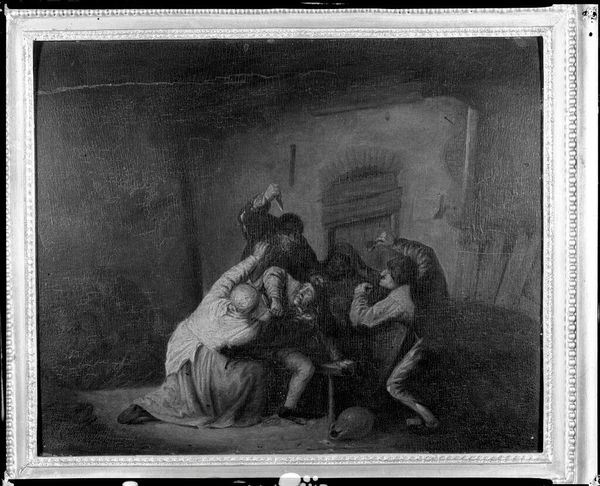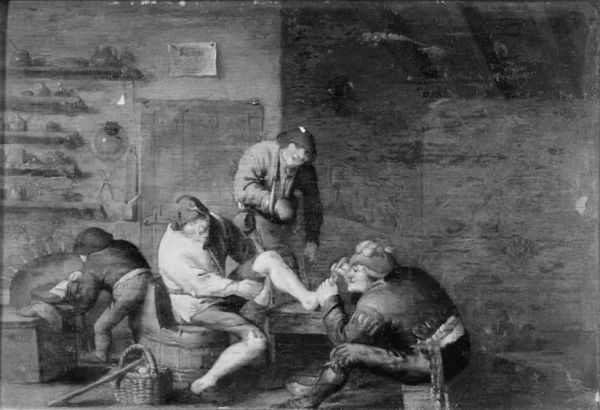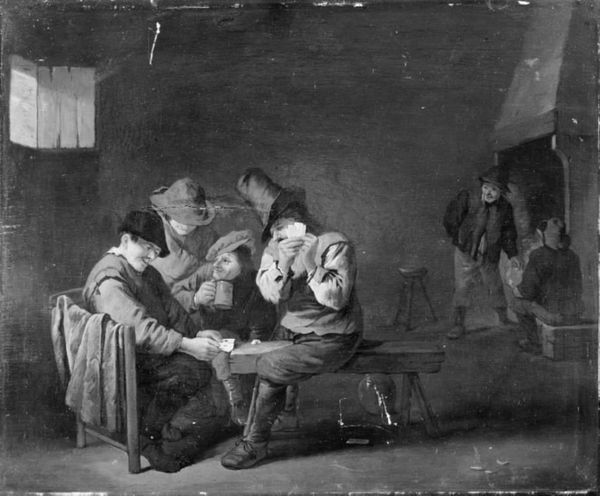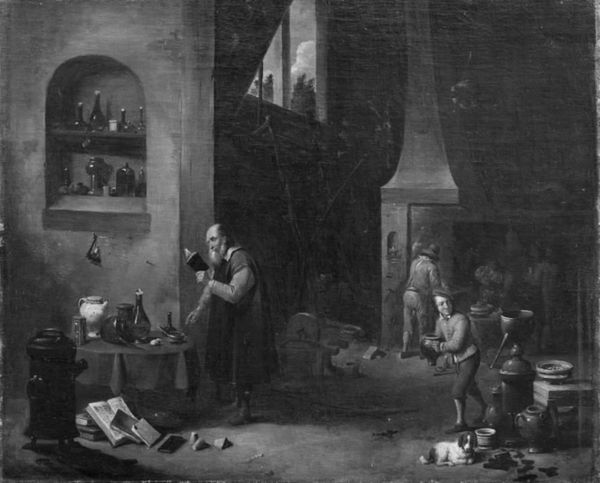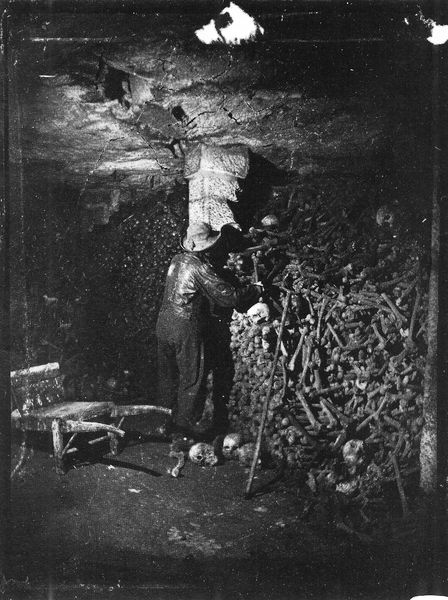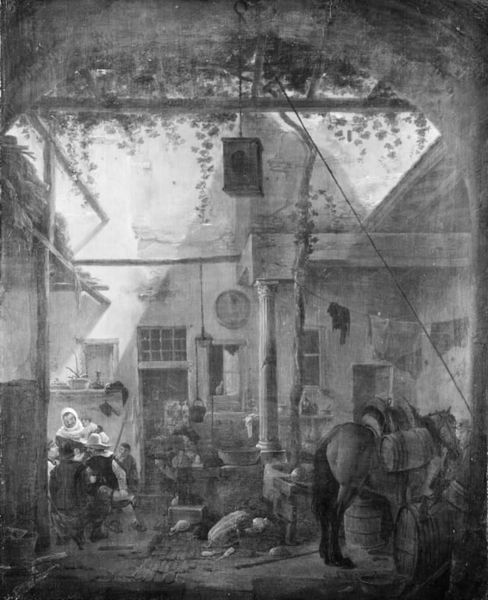
painting, oil-paint
#
narrative-art
#
dutch-golden-age
#
painting
#
oil-paint
#
figuration
#
black and white
#
monochrome photography
#
genre-painting
#
history-painting
#
monochrome
#
realism
#
monochrome
Dimensions: 22 cm (height) x 27.5 cm (width) (Netto)
Editor: This small oil painting, "Two Peasants Fighting with Knives" by Adriaen van Ostade from 1640, really grabs you with its chaotic energy, even though it's not large in scale. What jumps out at you about this scene? Curator: I see a fascinating snapshot of 17th-century social dynamics. Ostade often depicted peasant life, but not always idyllically. How does this deviate from typical heroic historical narratives of the time, do you think? Editor: Well, most history paintings at the time focused on powerful leaders and grand battles, whereas this hones in on the gritty realities of everyday conflict, away from any heroism. What does that imply about its reception? Curator: Precisely. This challenges established hierarchies and exposes the darker aspects of society often overlooked by the elite. Look at the setting – a dimly lit, crowded interior. How does this influence the viewers’ understanding of these people? Editor: It creates a feeling of claustrophobia and underscores their lower social standing; the opposite of royal finery. Also, the dark and muddied tones of the paint definitely emphasize that grime. Curator: The artist is using a type of visual vernacular, yes. This painting functions as a genre painting with a historical function by subtly subverting expectations, forcing us to reconsider who is deemed worthy of portrayal. What lasting impression does it leave? Editor: It makes me wonder about the purpose of art: documenting what’s idealized or holding a mirror to society. Thank you for pointing that out! Curator: It's interesting to consider its function. Indeed, looking beyond the surface tells us much about art’s powerful cultural role in reflecting– and sometimes reforming–society.
Comments
No comments
Be the first to comment and join the conversation on the ultimate creative platform.
